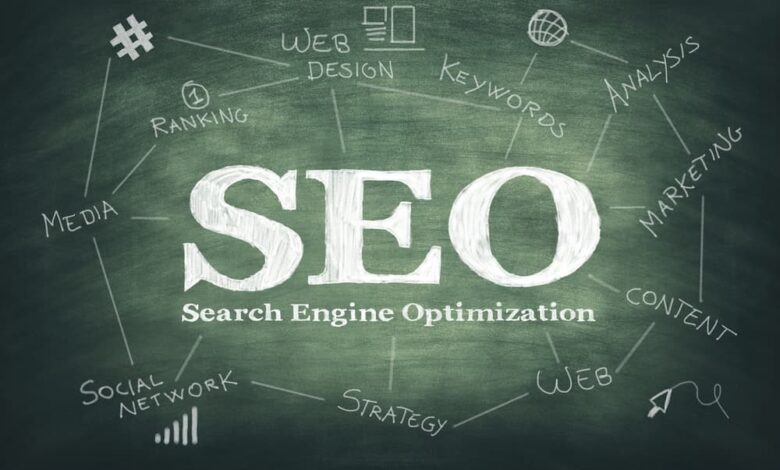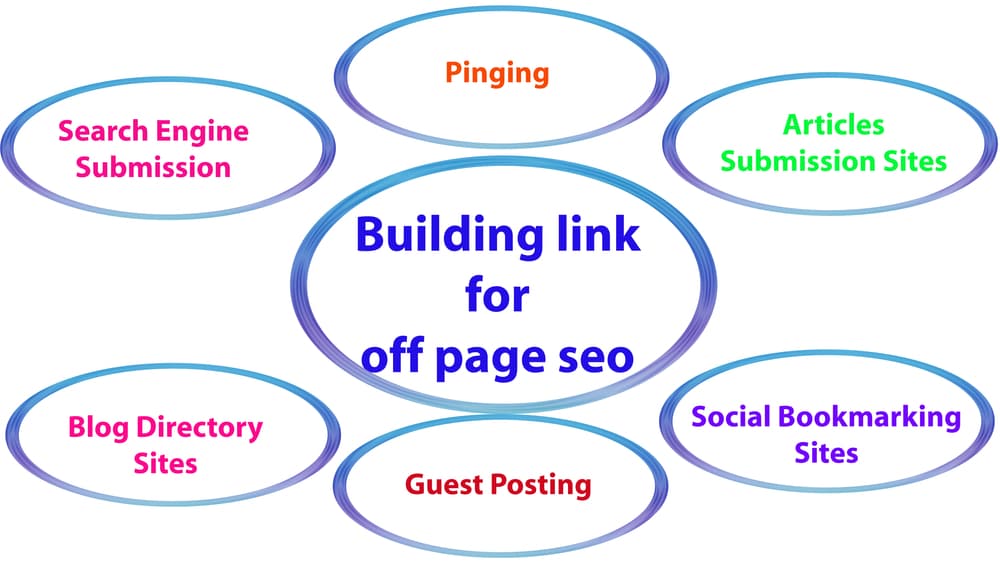
Want to improve your website’s visibility on search engines? Look no further than SEO (Search Engine Optimization)!
SEO can drive organic and targeted traffic, increase brand awareness, and improve conversion rates. From optimizing your website’s structure and content to building quality backlinks and implementing technical SEO, there are several elements to consider when developing a comprehensive SEO strategy.
Learn how to optimize your website for search engines and discover practical guidelines and insights to improve your website’s performance in search results. Stay updated with the latest SEO trends, such as voice search optimization and mobile-first indexing, to stay competitive online.
Unravel the secrets of SEO and unlock the full potential of your online presence!
in this guide, we will discover in our website:
- How search engines work.
- Benefits of SEO.
- Different aspects of SEO.
- Latest trends and updates in SEO.
How do search engines work?
Crawling:
- Search engines use bots to find new and updated web pages.
- These bots follow links from one page to another, discovering new content.
Indexing:
- Once a page is discovered, it’s added to the search engine’s index.
- The index is a massive database of all the known web pages.
Ranking:
- When you enter a search query, the search engine tries to find the most relevant pages in its index.
- It uses complex algorithms to rank these pages, considering relevance, authority, and freshness.
- The results are then displayed on a Search Engine Results Page (SERP).
In short:
- Search engines find web pages, store them in an index, and rank them based on relevance to your query.
Additional notes About Seo:
- Search engines are constantly evolving, and their algorithms are updated regularly.
- Search engines can also personalize results based on factors like your location and search history.
- Understanding how search engines work can help you improve your website’s ranking in search results.
Benefits of SEO (Search Engine Optimization)
1. Increased Website Traffic:
SEO is one of the most effective ways to drive traffic to your website. By ranking higher in search engine results, your website attracts more targeted visitors.
For example, if you have an e-commerce website selling sports apparel, SEO would benefit you by increasing the number of visitors interested in sports apparel through search engines.
Example: By implementing SEO strategies, an online sports store saw a 50% increase in organic website traffic, resulting in a surge of potential customers and higher sales conversions.
2. Enhanced User Experience:
SEO improves the overall quality and user experience of your website. By optimizing page loading speed, organizing content effectively, and improving site navigation, you can provide a seamless user experience that keeps visitors engaged.
Example: Through SEO optimization, a travel blog significantly reduced page load times, resulting in a 30% decrease in bounce rate and a 25% increase in page views per session, indicating improved user satisfaction and engagement.
3. Brand Awareness and Credibility:
Securing top positions in search engine rankings boosts brand visibility and credibility. When your website appears on the first page of search results, it instills trust in users and establishes your brand as an authority in the industry.
Example: A digital marketing agency witnessed a substantial increase in brand recognition after implementing a comprehensive SEO strategy. Their website consistently appeared in the top three search results, leading to a 40% rise in direct inquiries from potential clients.
4. Cost-Effectiveness:
SEO offers a cost-effective marketing approach compared to other digital advertising methods. While it requires an initial investment, the long-term benefits outweigh the costs. Once your website ranks well organically, you can enjoy a steady stream of targeted traffic without ongoing advertising expenses.
Example: A small business owner saved thousands of dollars in paid advertising costs by focusing on SEO. By optimizing their website and targeting relevant keywords, they achieved higher search engine rankings and a consistent flow of qualified leads, resulting in a significant return on investment.
5. Targeted Traffic:
SEO helps you attract highly targeted traffic to your website. By optimizing your content and keywords for specific search queries, you can reach users who are actively searching for products, services, or information related to your industry. This increases the likelihood of converting visitors into customers.
Example: A local bakery implemented local SEO strategies, optimizing their website for keywords such as “freshly baked bread” and “artisan pastries.” As a result, they experienced a surge in website traffic from residents looking for bakery products, leading to a significant increase in store visits and sales.
6. Long-Term Results:
Unlike some short-term marketing tactics, SEO provides long-lasting results. Once your website ranks well in search engine results, it tends to maintain its position with ongoing optimization and maintenance. This means that you can continue to reap the benefits of increased visibility and traffic over an extended period.
Example: An online publication focused on lifestyle and wellness consistently invested in SEO efforts. As a result, their articles continued to rank highly in search results, driving a steady stream of organic traffic months after the initial publication. This prolonged exposure helped them build a loyal readership and attract advertisers.
7. Competitive Advantage:
In today’s digital landscape, SEO is crucial for staying ahead of the competition. By optimizing your website and content, you can outperform your competitors in search rankings, attract more customers, and establish yourself as a leader in your industry.
Example: An e-commerce store operating in a highly competitive market leveraged SEO techniques to gain an edge over their competitors. By conducting thorough keyword research, optimizing product descriptions, and building high-quality backlinks, they consistently outranked their competitors and secured a significant market share.
8. Measurable Results and Analytics:
SEO allows you to track and measure the effectiveness of your strategies. Through analytics tools, you can gather valuable data on website traffic, user behavior, conversion rates, and more. This data helps you make informed decisions and refine your SEO approach for better results.
Example: A software company utilized SEO analytics to gain insights into user engagement and conversion rates. By analyzing the data, they identified areas for improvement, such as optimizing landing pages and refining their keyword targeting, resulting in a 20% increase in website conversions.
Different aspects of SEO
Here’s the breakdown of the different aspects of SEO into three categories: Internal SEO, External SEO, and Technical SEO.
1. Internal SEO:

Internal SEO refers to the optimization strategies applied within a website to improve its search engine rankings and visibility. It focuses on on-page optimization, content quality, and website structure.
Examples of Internal SEO:
- On-page optimization: Optimizing meta tags, headers, URL structure, and keyword usage.
- Content optimization: Creating high-quality, relevant, and engaging content.
- Internal linking: Establishing a well-structured internal linking system to enhance website navigation and improve user experience.
2. External SEO or off-page SEO:

External SEO involves activities performed outside of the website to improve its search engine rankings and reputation.
It primarily focuses on building high-quality backlinks from authoritative and relevant websites, social media engagement, and online reputation management.
Examples of External SEO:
- Link building: Acquiring backlinks from reputable and relevant websites to enhance the website’s authority and credibility.
- Social media marketing: Engaging with the audience on social media platforms, sharing content, and building brand awareness.
- Online reputation management: Monitoring and managing online reviews and mentions to maintain a positive brand image.
3. Technical SEO:
Technical SEO focuses on optimizing the technical aspects of a website to improve its crawling, indexing, and overall performance. It involves ensuring proper website structure, site speed, mobile-friendliness, and resolving any technical issues that may affect search engine accessibility.
Examples of Technical SEO:
- Website speed optimization: Optimizing page load times to enhance user experience and search engine rankings.
- Mobile optimization: Ensuring the website is responsive and performs well on mobile devices.
- XML sitemaps: Creating and submitting XML sitemaps to search engines to facilitate crawling and indexing.
- Canonical tags: Implementing canonical tags to prevent duplicate content issues.
A comprehensive SEO strategy improves website visibility, attracts targeted traffic, and enhances user experience, leading to higher search engine rankings and increased organic traffic.
SEO Trends and Updates in 2024: A Global Perspective
The Evolving SEO Landscape
The field of SEO is constantly evolving, and staying up-to-date with the latest trends is crucial for businesses looking to maintain a strong online presence. In 2024, several key trends are expected to shape the SEO landscape, with a strong emphasis on user experience, mobile optimization, and global reach.
1. Prioritizing User Experience:
- Google’s focus on user experience (UX) continues to grow, making it essential for businesses to prioritize UX in their SEO strategies.
- Core Web Vitals (CWV), which measure page loading speed, interactivity, and visual stability, will play an even more significant role in determining search rankings.
- Optimizing website performance and ensuring a seamless user experience across all devices and regions will be key to SEO success.
2. Mobile Optimization for a Global Audience:
- With the majority of internet traffic now coming from mobile devices, mobile optimization is non-negotiable for businesses targeting a global audience.
- Ensuring that websites are responsive, load quickly, and offer a user-friendly experience on mobile devices will be crucial for SEO success in 2024.
3. Passage Indexing for Long-Form Content:
- Google’s introduction of passage indexing allows for more granular ranking of specific sections within a web page.
- This presents an opportunity for businesses to optimize long-form content for specific keywords and user queries, increasing the chances of appearing in featured snippets and driving targeted traffic to relevant sections of their websites.
4. Understanding User Intent with AI and NLP:
- The use of artificial intelligence (AI) and natural language processing (NLP) in search engines is growing rapidly.
- These technologies enable search engines to better understand the intent behind user queries, providing more relevant and accurate results.
- Businesses can leverage AI and NLP by optimizing their content for specific user intents, using conversational language, and incorporating long-tail keywords that reflect the way people search for information.
5. Voice Search Optimization for a Mobile World:
- Voice search is becoming increasingly popular, especially on mobile devices.
- Optimizing content for voice search by using conversational language, natural keywords, and question-based formats will be key for businesses looking to capture this growing segment of users.
6. Building Trust and Authority:
- Google’s emphasis on E-A-T (Expertise, Authoritativeness, and Trustworthiness) continues to be a critical factor in search rankings.
- Businesses can build trust and authority by creating high-quality content, establishing themselves as experts in their field, and acquiring backlinks from reputable sources.
7. Featured Snippets and Rich Results:
- Featured snippets and rich results continue to be prominent in search results, offering businesses an opportunity to increase visibility and click-through rates.
- Optimizing content for featured snippets and using schema markup to enhance rich results can help businesses stand out in search results and attract more targeted traffic.
8. Local SEO for Global Reach:
- Local SEO remains an important aspect of SEO for businesses with a physical presence or targeting local customers.
- Optimizing for local search involves claiming and managing Google My Business listings, acquiring local citations, and ensuring consistent NAP (Name, Address, Phone number) information across local directories.
9. AI and Machine Learning in Search:
- The use of AI and machine learning in search is expected to grow significantly in 2024.
- Businesses can stay ahead of the curve by understanding how AI and machine learning impact search and adapting their strategies accordingly.
10. Staying Updated with SEO Trends:
- The SEO landscape is constantly changing, and businesses must stay up-to-date with the latest trends and best practices to maintain their online visibility and search rankings.
- Following industry publications, attending conferences, and engaging with SEO communities can help businesses stay ahead of the curve and adapt their strategies effectively.
By incorporating these key trends into their SEO strategies, businesses can position themselves for success in 2024 and beyond. By prioritizing user experience, mobile optimization, and global reach, businesses can build a strong online presence and attract targeted traffic from around the world.
FAQ about SEO
What is SEO?
SEO stands for Search Engine Optimization. It is the practice of optimizing a website to improve its visibility and rankings in search engine results pages (SERPs).
The goal of SEO is to increase organic (non-paid) traffic to a website by making it more relevant and appealing to search engines and users.
Why is SEO important?
SEO is important because most online experiences begin with a search engine. When your website ranks higher in search results, it receives more visibility and organic traffic. This can lead to increased brand exposure, website visits, and potential conversions. SEO helps businesses and websites gain a competitive edge and reach their target audience effectively.
How does SEO work?
SEO involves various strategies and techniques to optimize a website. It includes on-page optimization (optimizing content, meta tags, URLs, etc.), technical optimization (improving site speed, mobile-friendliness, etc.), and off-page optimization (building high-quality backlinks). SEO also focuses on keyword research, user experience, content creation, and other factors that search engines consider when ranking websites.
What are keywords in SEO?
A: Keywords are words or phrases that people use in search queries to find information online. In SEO, keyword research is the process of identifying relevant keywords and incorporating them strategically into website content. By optimizing for targeted keywords, websites can increase their chances of appearing in search results when users search for those specific terms.
What is on-page optimization?
On-page optimization refers to the practices carried out directly on a website to improve its visibility in search engine results. It involves optimizing elements such as page titles, headings, meta descriptions, URL structure, internal linking, and keyword usage within the content.
On-page optimization aims to make a website more relevant, informative, and accessible to both search engines and users.
What is off-page optimization?
Off-page optimization focuses on improving a website’s reputation and authority through activities performed outside of the website itself. It primarily involves building high-quality backlinks from other reputable websites.
Off-page optimization also includes social media marketing, influencer outreach, content promotion, and other strategies to enhance a website’s online presence and credibility.
How long does it take to see results from SEO efforts?
The timeline for seeing SEO results can vary depending on several factors, such as the competitiveness of the industry, the current state of the website, the quality of SEO efforts, and the search engine algorithms. Generally, it takes time for search engines to crawl and index a website and for the optimization efforts to have an impact. It’s common to see noticeable improvements within a few months, but significant results may take several months to a year or more.
Is SEO a one-time process?
No, SEO is an ongoing process. Search engine algorithms evolve, competitors make changes, and user behavior shifts over time. To maintain and improve search rankings, it’s important to regularly monitor and adjust SEO strategies, create fresh and valuable content, adapt to algorithm updates, and stay updated with industry trends and best practices.
Can I do SEO on my own, or do I need to hire an expert?
It is possible to do SEO on your own, especially for smaller websites or businesses with the time and resources to learn and implement SEO strategies effectively. However, SEO can be complex and time-consuming, requiring expertise in various areas. Hiring an SEO expert or agency can save you time, provide specialized knowledge, and increase the chances of achieving better results in a shorter time frame.
Are there any risks or drawbacks to SEO?
While SEO is generally considered beneficial, there are some risks and drawbacks to be aware of. Poorly implemented or unethical SEO practices, such as keyword stuffing or purchasing low-quality backlinks, can result in penalties from search engines. Additionally, SEO is a long-term strategy, and results may not be immediate. It requires consistent effort, monitoring, and adaptation to changes in search engine algorithms and industry trends.

